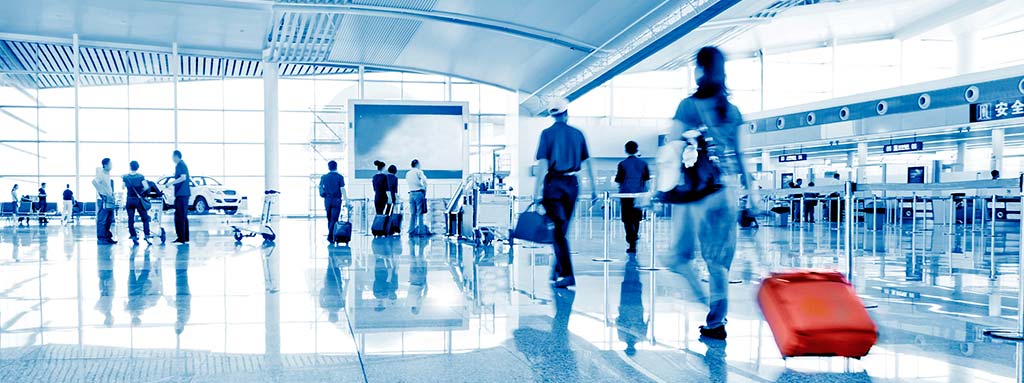In the past, airports were conceived simply as a set of infrastructures and facilities aimed at serving as a base for air transport. This has changed. Without setting aside their main aim, airports today compete to have a large part of their facilities geared at improving the passenger experience. Everyone likes travelling and it is an undeniable fact that the most comfortable way of doing so over long distances is by aeroplane.
One the keys to doing away with this Achilles’ heel in an airport’s excellence does not reside in diminishing security controls or requirements, but rather ensuring that processes run more efficiently and quicker.
Both the new airports that are being built all over the world and already existing airports’ improvement projects place the passenger at the very centre of their concerns. Everything revolves around making the trip as comfortable as possible, but not only that. Airports are very aware that the more time a passenger spends inside the airport the greater the possibilities are of the passenger consuming and spending money, an additional incentive for their profit and loss account. Furthermore, if the passenger is satisfied with the experience offered to them, well so much the better. The passenger will return if they can.
In most cases, improvements aimed at passengers are focused on terminal facilities. Luxurious VIP lounges, gardens, waterfalls, cinemas, play areas, gyms, swimming pools, relaxation areas, restaurants, shops… Everything is conceived to ensure the time spent at the airport is an experience well worth recounting.
Nonetheless, these wonderful experiences are sometimes tarnished due to the bad experiences resulting from waiting times, or what is pretty much the same queues. Certain points in the travelling process often suffer tiresome delays. The reason behind them is almost always security.
We can all agree that security at airports should be very tight. This factor has to be taken into account with regard both to the security of the flights themselves as well as to the conditions for the entry of people into the country, where appropriate.
One the keys to doing away with this Achilles’ heel in an airport’s excellence does not reside in diminishing security controls or requirements, but rather ensuring that processes run more efficiently and quicker. It may not be possible to generalise measures, but we can certainly do so for those who meet certain requirements. In addition, the new technologies allow us to have a lot of resources to do so increasingly.
In United States, for instance, the Customs and Border Protection Agency launched an app for mobile phones and tablets in 2014 geared at speeding up entry into US territory for passengers arriving from other countries. Users have to create a profile with said app containing passport information, including their name, nationality, sex and date of birth. Then a questionnaire has to be completed and a selfie taken depending on the destination airport and airline. Subsequently, passengers receive a QR code, which will be scanned by the customs official. Passing through immigration controls is almost immediate.
Passenger mobility began to be monitored at Austin Airport a few months ago through the Wi-Fi signals transmitted by passengers’ mobile phones. This system will progressively be implemented at a dozen other airports. Thanks to it and the use of predictive models, available resources can be managed in advance to avoid congestion at airport control points. Action can consequently be taken more efficiently and waiting times shortened.
Several airports are also about to implement personalised notification systems in the handsets of previously identified passengers who have signed up for the service. Like the above, this can speed up processes while providing additional comfort to passengers, since they won’t need to hang around looking at information screens.
Many technology, training and organisational resources are already available, but they have yet to be implemented to ensure the passenger experience is improved. Not all of them depend on the airport, rather they require the passenger’s collaboration. At the end of the day, who doesn’t want to avoid queues?



